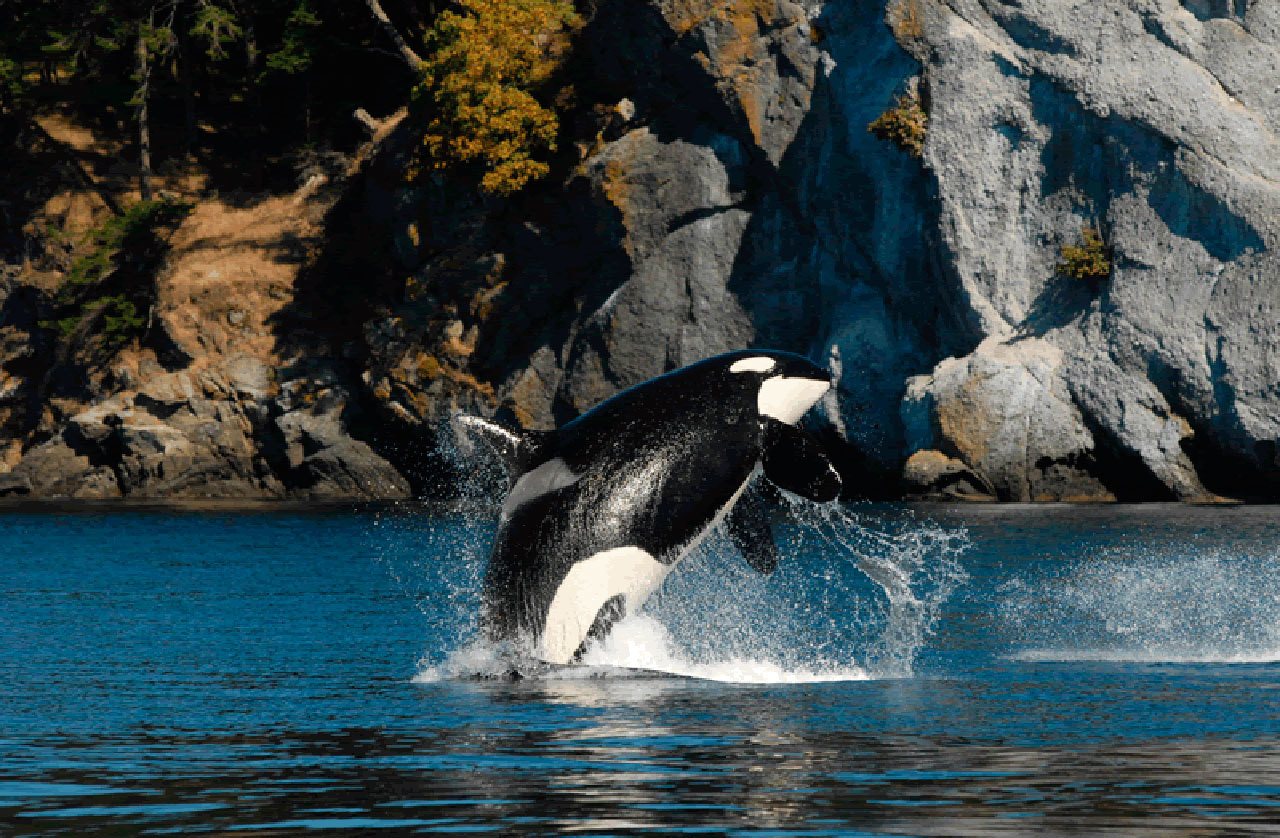Most people anticipate the death of grandparents, but it doesn’t make it any easier.
“We lose orcas as individuals because we know them as individuals,” said Center for Whale Research Research Director Deborah Giles.
On Jan. 2, the center announced the presumed death of Granny, or J2 — the oldest known killer whale in the world. Center researchers last saw Granny on Oct. 12, 2016 swimming north in Haro Straight. According to Giles, it takes three sightings of an entire pod to declare an orca missing, or presumed dead.
“There’s no way she’s still alive now that we’ve seen the rest of the Jpod and L87 since mid-November,” said Giles.
It was Granny who most recently adopted L87 after his mother died when he was 6, making the two inseparable for several years. After searching for a new mother figure in Lpod, L87 switched pods completely to be with Granny.
That was just one of many documented firsts among orcas during Granny’s reign as the matriarch of Jpod. The pod is one of the three groups of Southern resident killer whales who live in the Salish Sea, for part of the year. Sometimes, even those from K and L pods minded Granny, when she smacked her tail in the water.
“It would be like a schoolmarm blowing a whistle,” said Giles, who added that a replacement leader for Jpod would not likely be seen until the spring.
Recent research from the National Oceanic and Atmospheric Administration puts Granny’s age at 80 to early 100s. This is an estimate, as the center’s official identification began in 1976, when she was an adult – already likely in menopause and with seemingly no calves of her own.
About 40 years ago, Ken Balcomb, founder of the Center for Whale Research, first saw the half-moon crescent notch of Granny’s dorsal fin in Puget Sound, according to the center’s website. Granny was among the first 71 killer whales cataloged in the center’s now annual, official census of Southern resident killer whales, contracted by the federal government. It’s the world’s longest and most respected research on the population and has identified about 220 Southern resident killer whales since it began. The oldest Jpod member is now J16, who is about 44, according to the center.
The visible markings on Granny’s dorsal fin and the color of her saddle patch helped to prove that killer whales could be identified by sight — a then unfounded theory produced by Canadian Biologist Mike Bigg. It is now the undisputed identification process.
When she was first discovered, it was Granny’s presumed son (but later identified as a close relative) J1 or Ruffles who took the pod’s first alphanumerical identification, in the presumption that males led packs.
“We learned from her that the oldest females do matter; that they do lead their group,” said Giles. “She was the most obvious in that behavior.”
Granny lived through a time when whales were hunted because they were seen as competition for food and because they were feared. She survived several marine park captures in the 1970s, according to Jenny Atkinson, executive director of The Whale Museum. Her large size caused capturers to release, she said, as Granny was too large to transport.
“In 1911 (Granny’s estimated birth year), there weren’t as many toxins and pesticides in the ground, the area she lived by wasn’t as urban, there was no salmon scarcity,” said Atkinson. “How did she have such a long life? Because she had a better start in order to live longer?”
As of Dec. 31, there were 78 Southern resident killer whales, according to the Center for Whale Research. By June, the museum will feature a new memorial exhibit on deceased orcas.
“We are the story keepers, who help people remember connections to the orcas so we can be stewards for them,” said Atkinson.
There are others who have told Granny’s story: Children’s House on Orcas, which helped to elect Granny as honorary mayor of Eastsound in 2015; a recent BBC Radio documentary about the uniqueness of humans and killer whales to live long after child birthing years, featuring Granny; singer/songwriter Dana Lyons, who wrote a song about the Salish Sea’s growing threats to orcas, from Granny’s perspective in 2014, playing it across Canada and the U.S.; B-roll of Granny in “Free Willy”; children’s books about her life; global media coverage of her death; and even the orcas, themselves.
“When you think about what she brought to the community, what she learned as a calf and passed on to everyone after her – how do you quantify that? It’s priceless,” said Giles with tears in her eyes. Although Granny looked thinner last month, NOAA’s last flight over the whale showed her catching and sharing fish with a recently orphaned calf, J45, who lost her mom J14, last fall.
To continue to collect Granny’s story, the public can shares photos and anecdotes of her life from 1 p.m. to 3 p.m., Friday, Jan. 13 at The Whale Museum. They will be featured in a memorial for Granny and other deceased orcas by the museum and The Journal. For more information, call the museum at 378-4710 or The Journal at 378-5696.



